Description
Two Women Looking Out at Sea by Kikukawa Eizan printed on a T-Shirt
About the T-Shirt
Regular fit
Standard length, the fabric easily gives into movement
Casual wear
A classic, everyday option loved by our customers
Side-seamed
Constructed by sewing two parts together, creating a fitted look
The Unisex Staple T-Shirt feels soft and light with just the right amount of stretch. It’s comfortable and flattering for all. We can’t compliment this shirt enough–it’s one of our crowd favorites, and it’s sure to be your next favorite too!
- Solid colors are 100% Airlume combed and ring-spun cotton
- Ash color is 99% combed and ring-spun cotton, 1% polyester
- Heather colors are 52% combed and ring-spun cotton, 48% polyester
- Athletic and Black Heather are 90% combed and ring-spun cotton, 10% polyester
- Heather Prism colors are 99% combed and ring-spun cotton, 1% polyester
- Fabric weight: 4.2 oz./yd.² (142 g/m²)
- Pre-shrunk fabric
- 30 singles
- Side-seamed construction
- Tear-away label
- Shoulder-to-shoulder taping
- Blank product sourced from Nicaragua, Mexico, Honduras, or the US
Kikukawa Eizan (1787-1867)
Kikukawa Eizan was a designer of ukiyo-e style Japanese woodblock prints. He first studied with his father, Eiji, a minor painter of the Kanō school. He then studied with Suzuki Nanrei (1775–1844), an artist of the Shijō school. He is believed to have also studied with the ukiyo-e artist Totoya Hokkei (1790–1850). He produced numerous woodblock prints of beautiful women in the 1830s, but then abandoned printmaking in favor of painting.
This artist should not be confused with Harukawa Eizan, an ukiyo-e print designer who was active in the 1790s.
Eizan was the most prolific, longest-lived and ultimately the best of the late followers of Utamaro, who attempted to carry on the master’s bijin style after his death in 1806.
Along with Kikumaro, Tsukimaro and Utamaro II, Eizan has generally been dismissed by connoisseurs as a plagiarist of Utamaro’s late style, but his work in fact develops, like that of most ukiyo-e artists, from a close identification with a leading master to a studied independence, and contains pieces of remarkable beauty and interest.
ukiyo-e artists with whom he is often associated, Eizan was not an actual pupil of Kitagawa Utamaro, but studied originally with his father, Kikugawa Eiji, a Kano style painter and fan maker, and later with the Shijo artist Suzuki Nanrei and the Hokusai pupil Hokkei. Few traces of this eclectic training can be seen in Eizan’s early work, produced shortly after the death of Utamaro and for the most part in that master’s style.
In the following decade, however, as Eizan reached artistic maturity, he began to develop his own figural style, still focused for the most part on prints of beautiful women (bijin-ga). Eizan’s work retains the sensitivities and lyricism that marks the Utamaro style, however, not following the earthier realism and more overt sensuality of Kunisada and Ikeda Eisen .
Eizan, like Toyokuni I in actor prints, is the last manifestation of the classical ukiyo-e style in bijin work, with harmonious colors and graceful lines and subjects. After him, one senses the introduction of a different aesthetic, with harsher colors, angular lines and less ethereal material, more of an emphasis, in sum, on the material weight of earthly life, rather than its transformation into something of elegance.
With Eizan, the alchemy of elegance is still alive, and in his best work, properly produced, he can cast a magic glow over the forms of the world and create lightness and grace.
He is also left-handed, which was strange at such a time in Japan.

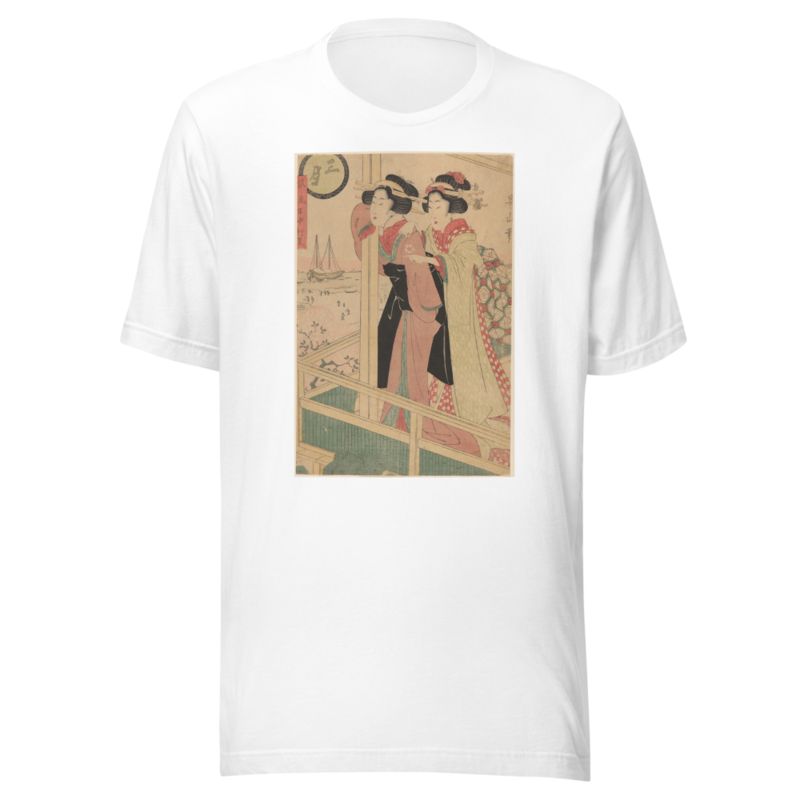
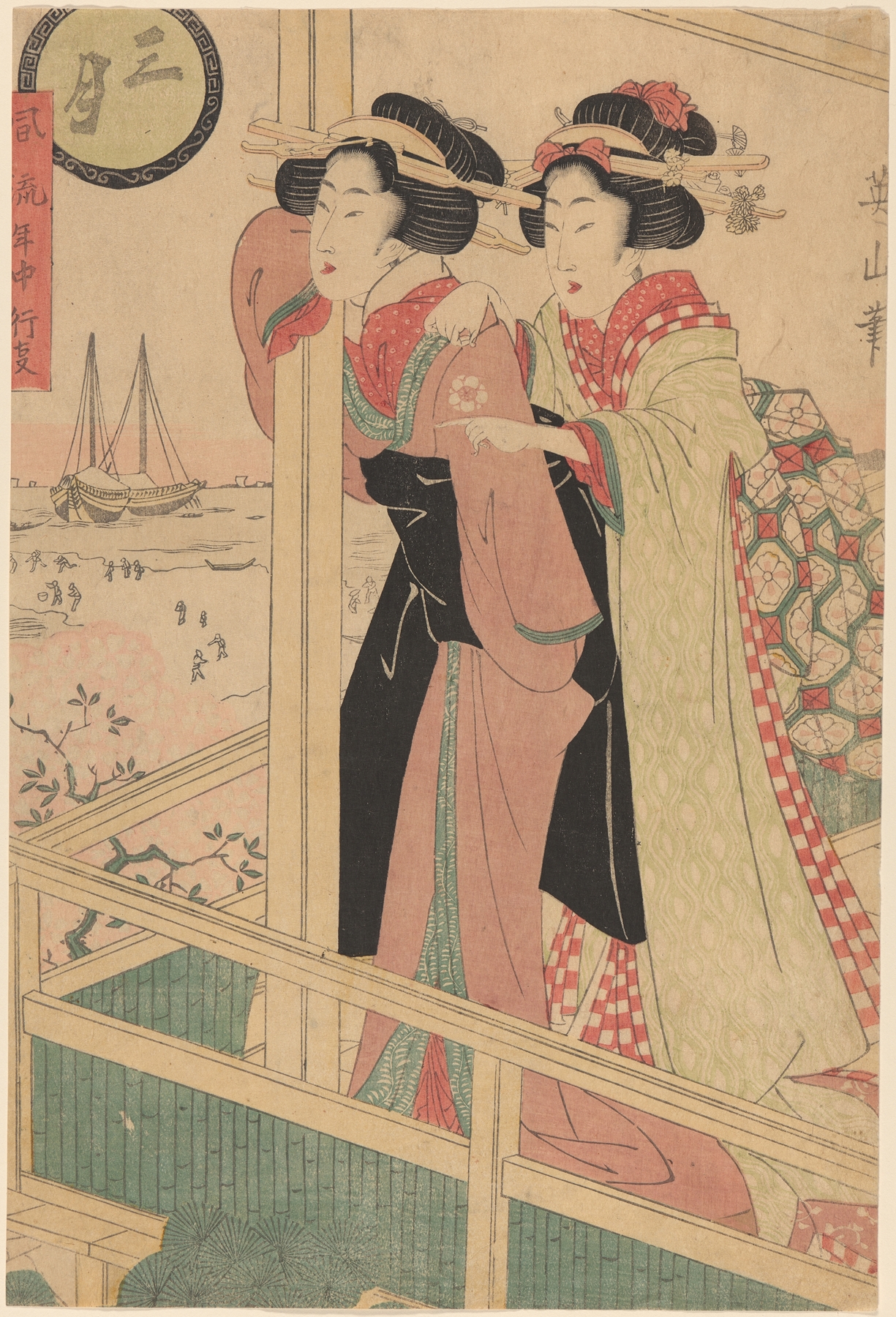
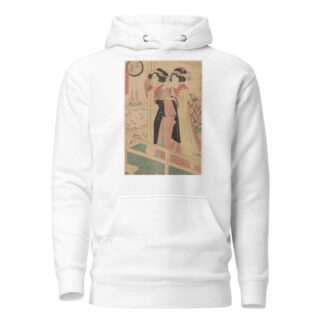
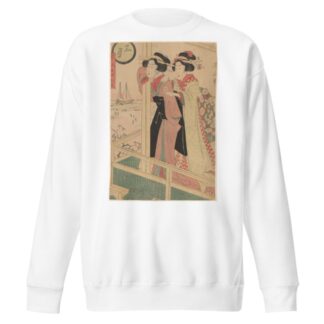
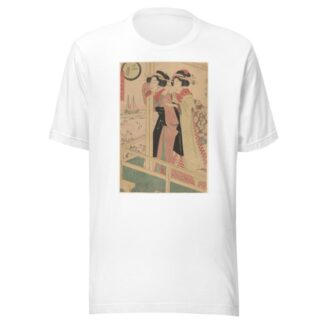
Reviews
There are no reviews yet.